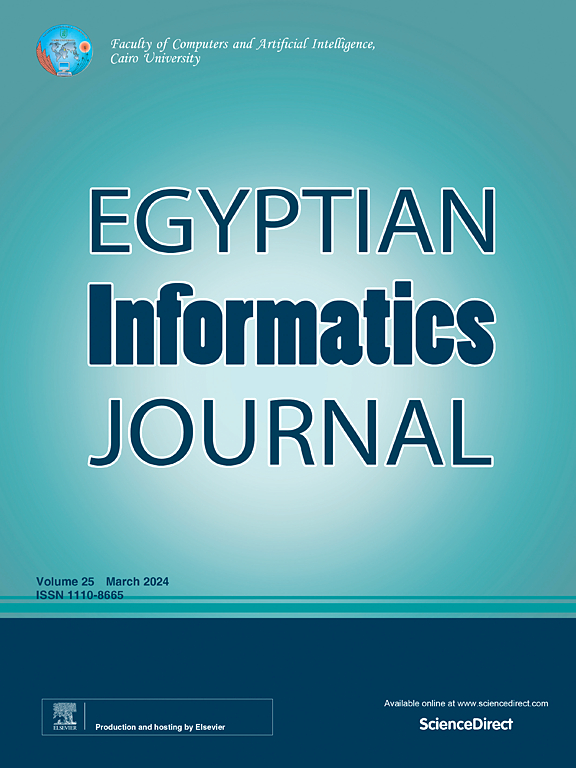利用深度神经网络叠加组合分析社交网络内容识别假新闻
IF 4.3
3区 计算机科学
Q1 COMPUTER SCIENCE, ARTIFICIAL INTELLIGENCE
引用次数: 0
摘要
在当今快节奏的世界中,社交网络的空前扩张和信息量的巨大,使得自动检测假新闻成为不可否认的必要性。假新闻和错误信息的传播会对公众舆论和社会决策产生破坏性影响。这一挑战需要在深度学习和自然语言处理领域采用新的、强大的方法来准确、快速地识别假新闻并防止其传播。为此,目前的工作提出了一种新的、有效的解决方案来检测和发现社交媒体上的虚假新闻。该方法通过深度文本内容分析和先进的深度学习技术,旨在为解决这一问题提供广泛而准确的响应。该方法包括三个确定步骤:1)使用预处理技术对输入数据进行初步准备。这是通过去除噪声、文本规范化和将数据转换为可由深度学习模型处理的格式来完成的。2)然后使用混合方法提取文本特征,这是一组统计特征(例如,文本长度,单词计数和链接),基于手套的语义特征(表示单词关系)和字符N-Grams (CNG)的组合(以改善拼写错误和语言异常鲁棒性)。3)最后,对于每一组特征,训练一个特定的深度模型,基于每个组件进行预测。具体来说,多层感知器(MLP)模型用于统计特征分析,卷积神经网络(CNN)模型用于GloVe和CNG特征。这两个模型都从提供给它们的输入特征中生成单独的预测,并且每个模型的预测标签和后验概率向量被组合以输出一个向量,然后转发给元学习器(MLP模型)。通过学习输出组合中的模式和单个基础模型的概率向量,MLP模型可以正确识别假新闻或真实新闻。在两个真实数据集(GossipCop和Politifact)上进行的实验结果表明,我们的方法分别达到了99.45%和97.40%的准确率。这一成就表明我们的方法在两个数据集上检测假新闻的性能非常好和有效。本文章由计算机程序翻译,如有差异,请以英文原文为准。
Analysis of social networks content to identify fake news using stacked combination of deep neural networks
In today’s fast-paced world, the unprecedented expansion of social networks and the huge volume of information has made automatic detection of fake news an undeniable necessity. The dissemination of fake news and misinformation can have a devastating impact on public opinion and social decision-making. This challenge requires new and powerful approaches in the fields of deep learning and natural language processing to accurately and quickly identify fake news and prevent its dissemination. For that purpose, this current work presents a new and efficient solution to detecting and spotting spurious news on social media. This method, through deep text content analysis and the employment of advanced deep learning techniques, aims to provide an expansive and accurate response to solve this problem. The proposed method consists of three determining steps: 1) The input data is initially prepared for the next steps using preprocessing techniques. This is done through noise removal, text normalization, and data conversion into a format that can be processed by deep learning models. 2) A hybrid method is then used to extract text features, which is a combination of a list of statistical features (e.g., text length, word count, and links), GloVe-based semantic features (to represent the word relationships), and Character N-Grams (CNG) (to improve misspelling and linguistic anomaly robustness). 3) Finally, for each set of features, a particular deep model is trained to predict based on each component. Specifically, a Multilayer Perceptron (MLP) model is used for statistical feature analysis, and Convolutional Neural Network (CNN) models are used for GloVe and CNG features. Both models generate individual predictions from the input features presented to them, and the predicted labels and the posterior probability vector for each of the models are combined to output a vector to be forwarded to the meta-learner (a MLP model). By learning patterns in the combinations of outputs and the probability vectors of the individual base models, the MLP model can correctly identify fake news or real news. Experimental results conducted on two authentic datasets, GossipCop and Politifact, show that our proposed method achieves 99.45 % and 97.40 % accuracies, respectively. This achievement indicates the very good and effective performance of our method in detecting fake news on both datasets.
求助全文
通过发布文献求助,成功后即可免费获取论文全文。
去求助
来源期刊

Egyptian Informatics Journal
Decision Sciences-Management Science and Operations Research
CiteScore
11.10
自引率
1.90%
发文量
59
审稿时长
110 days
期刊介绍:
The Egyptian Informatics Journal is published by the Faculty of Computers and Artificial Intelligence, Cairo University. This Journal provides a forum for the state-of-the-art research and development in the fields of computing, including computer sciences, information technologies, information systems, operations research and decision support. Innovative and not-previously-published work in subjects covered by the Journal is encouraged to be submitted, whether from academic, research or commercial sources.
 求助内容:
求助内容: 应助结果提醒方式:
应助结果提醒方式:


